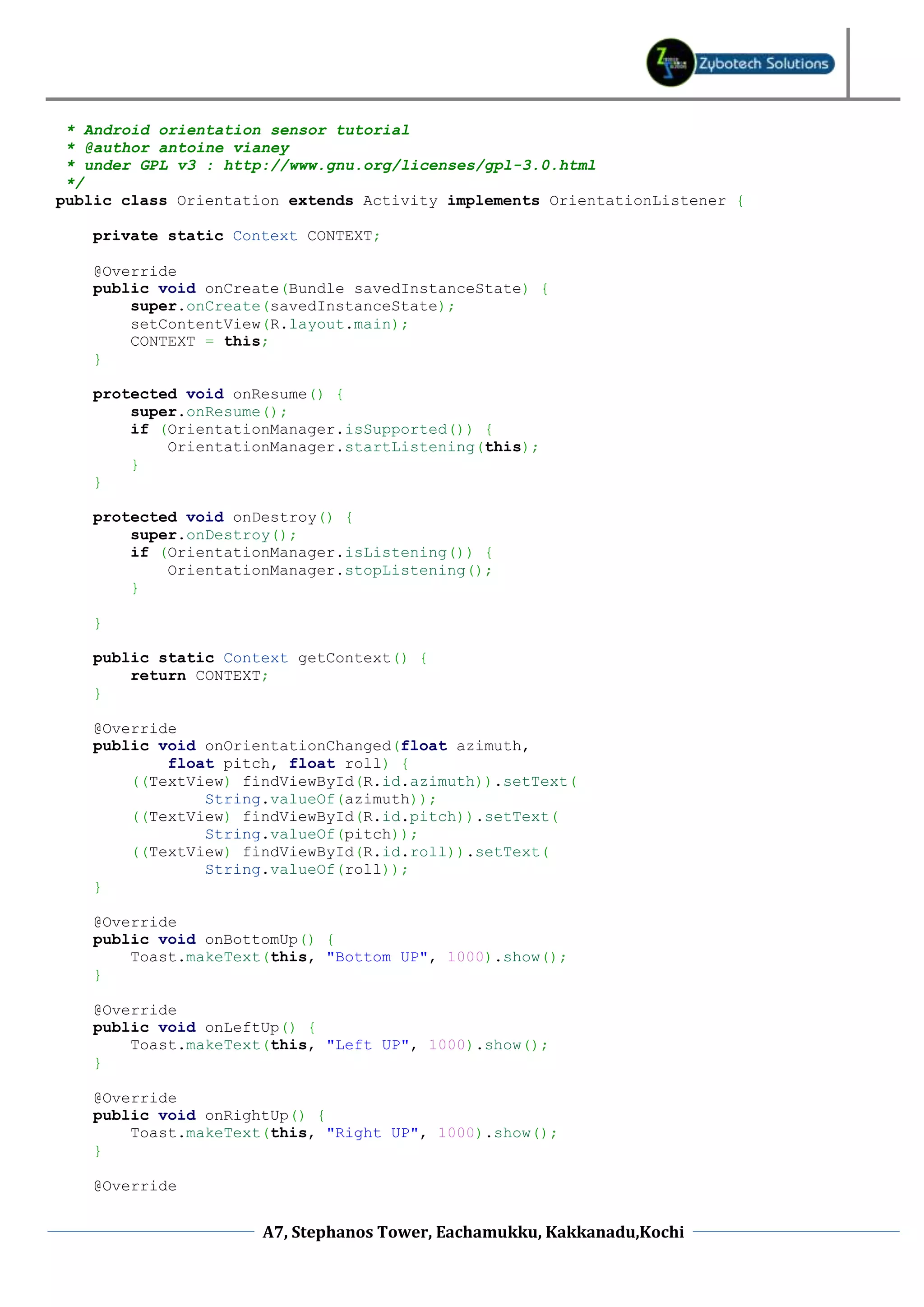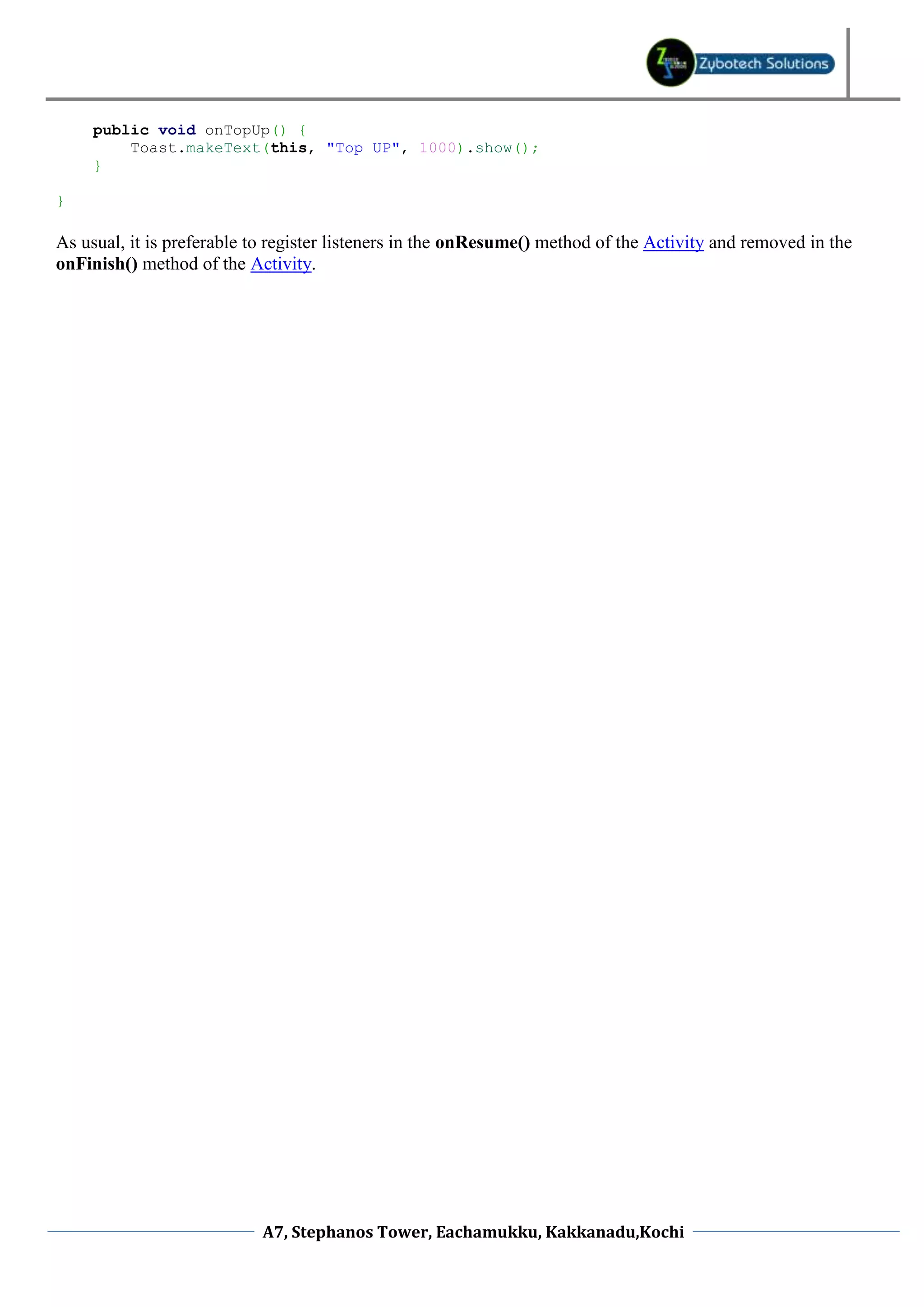This document provides a tutorial on using the accelerometer sensor in Android applications. It discusses retrieving the accelerometer sensor from the SensorManager, registering a listener, and handling sensor events to detect phone movements like shaking. Code examples are given for an AccelerometerListener interface, AccelerometerManager class to manage sensor access, and an Activity that implements the listener to detect shakes and log accelerometer data.
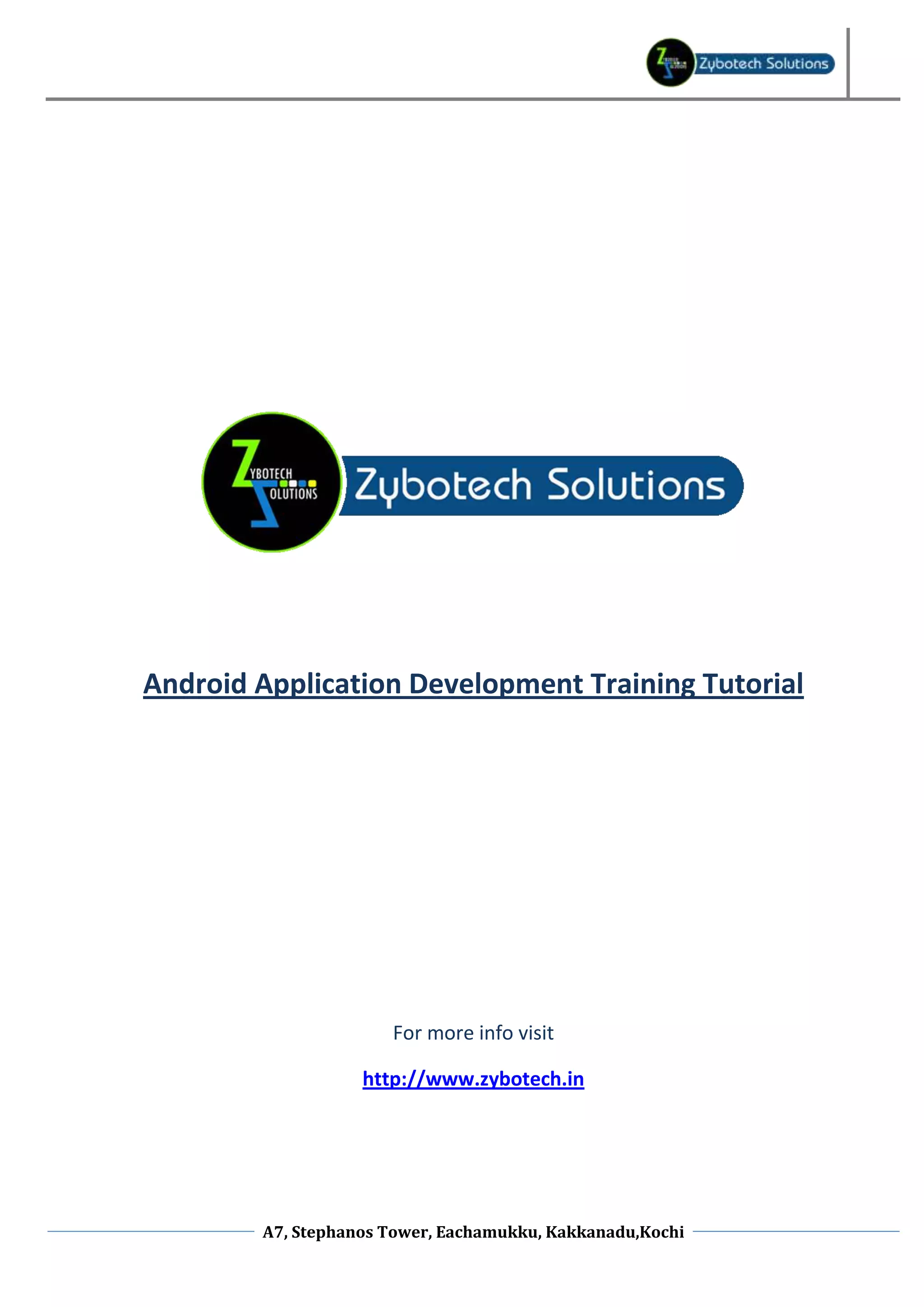
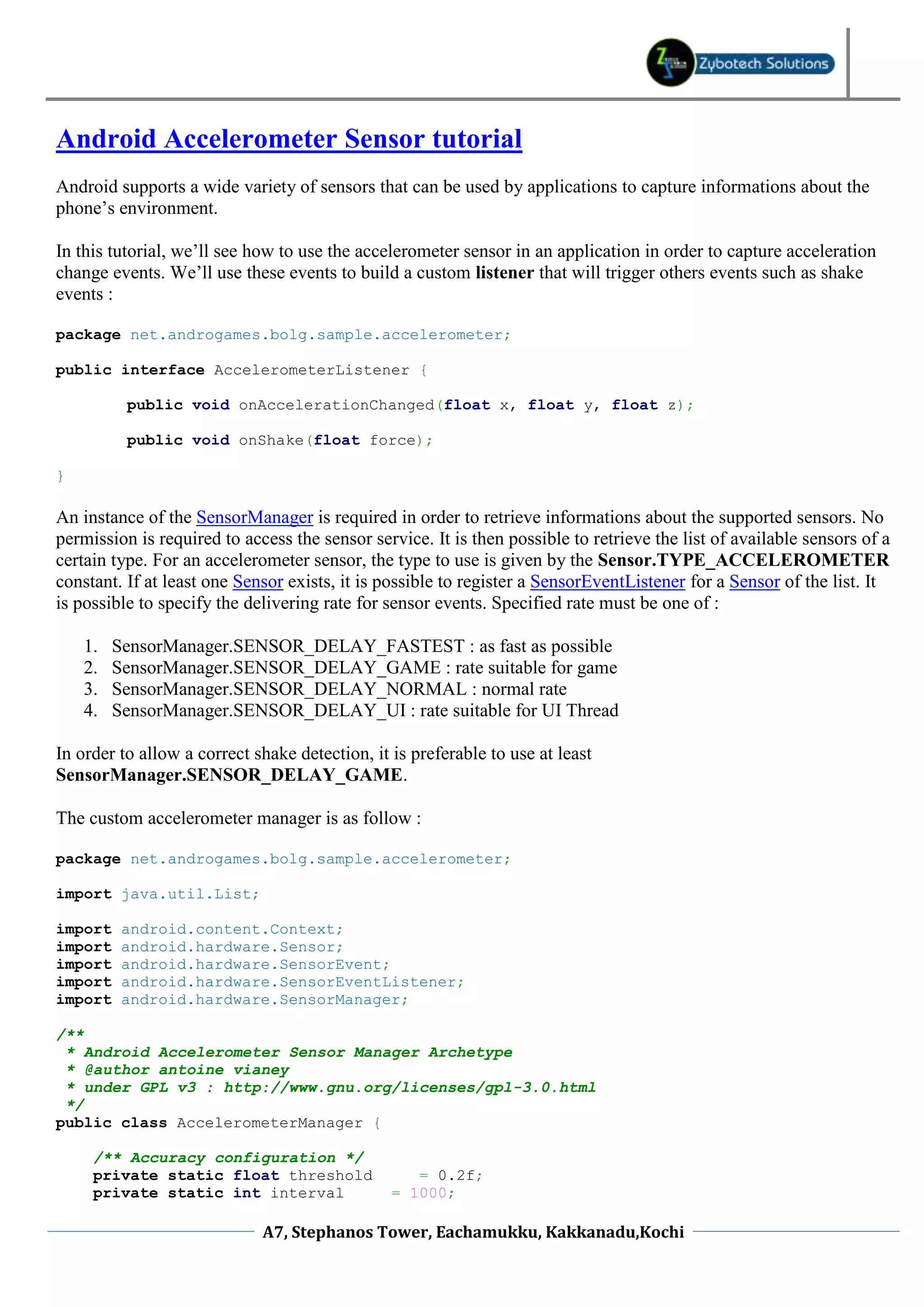
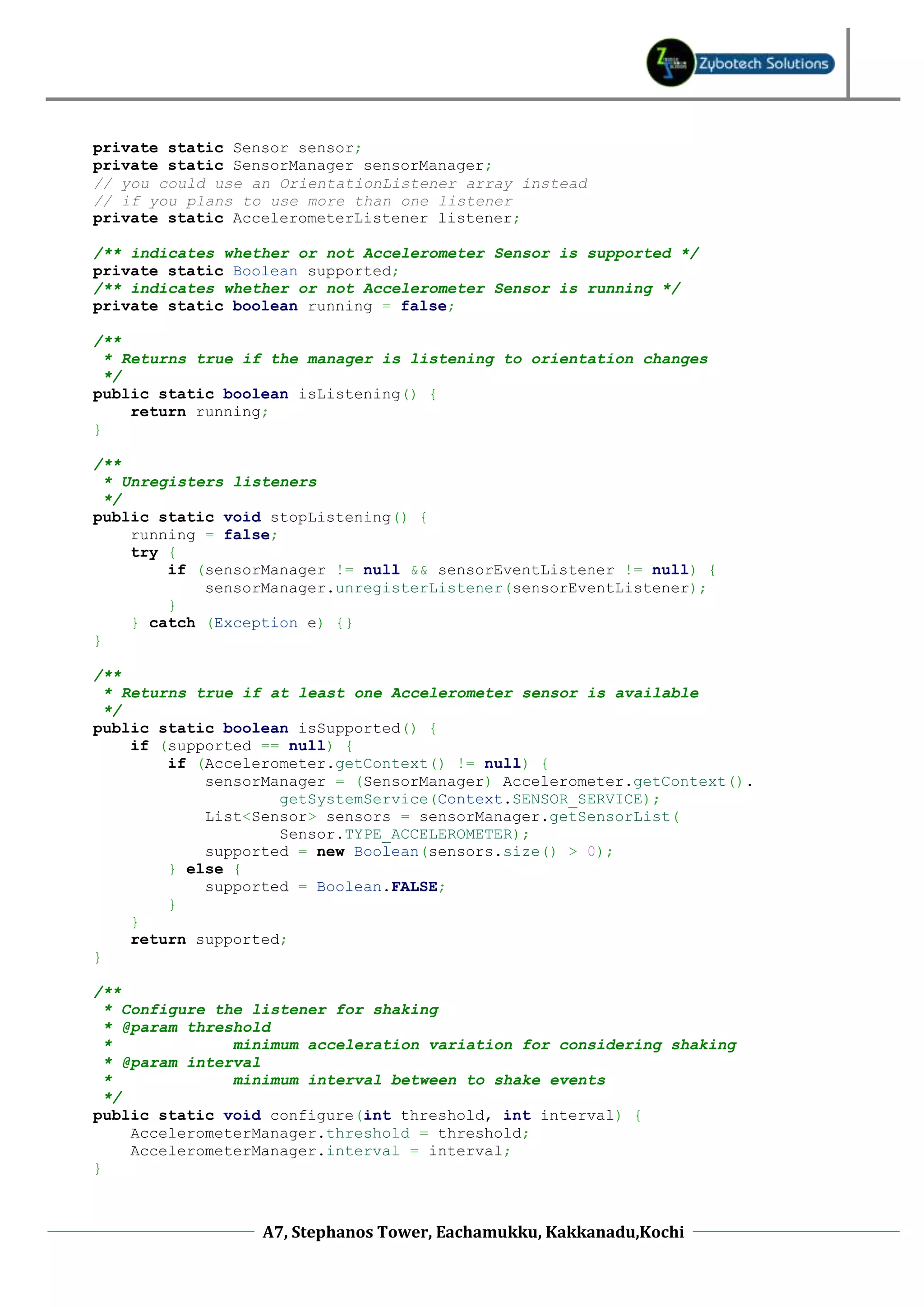
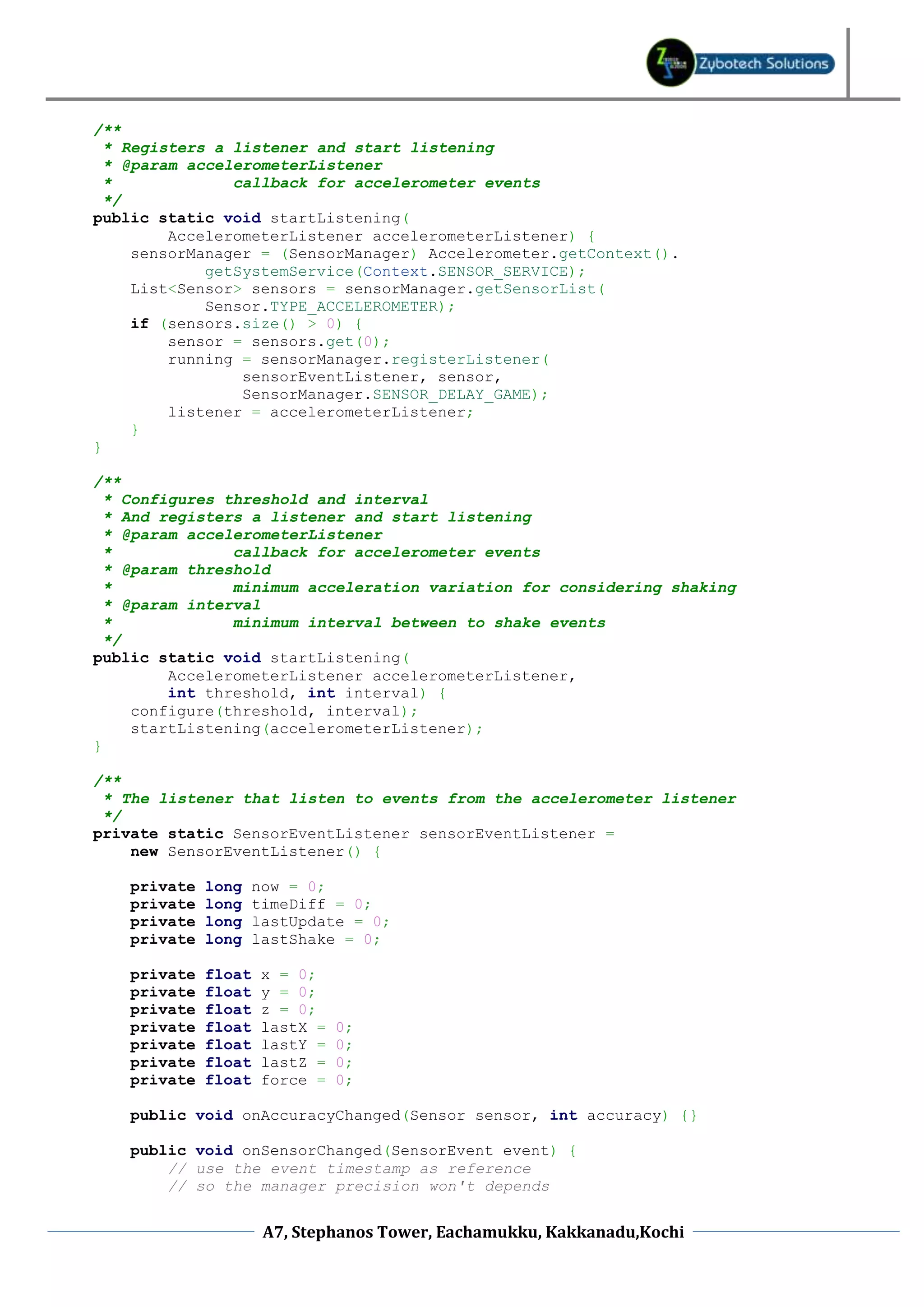
![// on the AccelerometerListener implementation
// processing time
now = event.timestamp;
x = event.values[0];
y = event.values[1];
z = event.values[2];
// if not interesting in shake events
// just remove the whole if then else bloc
if (lastUpdate == 0) {
lastUpdate = now;
lastShake = now;
lastX = x;
lastY = y;
lastZ = z;
} else {
timeDiff = now - lastUpdate;
if (timeDiff > 0) {
force = Math.abs(x + y + z - lastX - lastY - lastZ)
/ timeDiff;
if (force > threshold) {
if (now - lastShake >= interval) {
// trigger shake event
listener.onShake(force);
}
lastShake = now;
}
lastX = x;
lastY = y;
lastZ = z;
lastUpdate = now;
}
}
// trigger change event
listener.onAccelerationChanged(x, y, z);
}
};
}
In the case of a SensorEvent triggered by a Sensor of type Sensor.TYPE_ACCELEROMETER, the event’s
values represents the acceleration of the phone given by a vector in a cartesian coordinate system. Landing on a
table, the values returned by the SensorEvent for the phone should be :
1. 0 m/s2 along x axis
2. 0 m/s2 along y axis
3. 9,80665 m/s2 along z axis
From an event to another, the coordinates of the acceleration vector are stored to detect suddent acceleration
changes and to trigger a shake event when the threshold is reached. Others events could be implemented such
as the detection of up and down gestures, circular gestures and lot more…
The custom AccelerometerManager can be use in any Activity or Service :
package net.androgames.bolg.sample.accelerometer;
A7, Stephanos Tower, Eachamukku, Kakkanadu,Kochi](https://image.slidesharecdn.com/androidaccelerometersensortutorial-120919041736-phpapp01/75/Android-accelerometer-sensor-tutorial-5-2048.jpg)
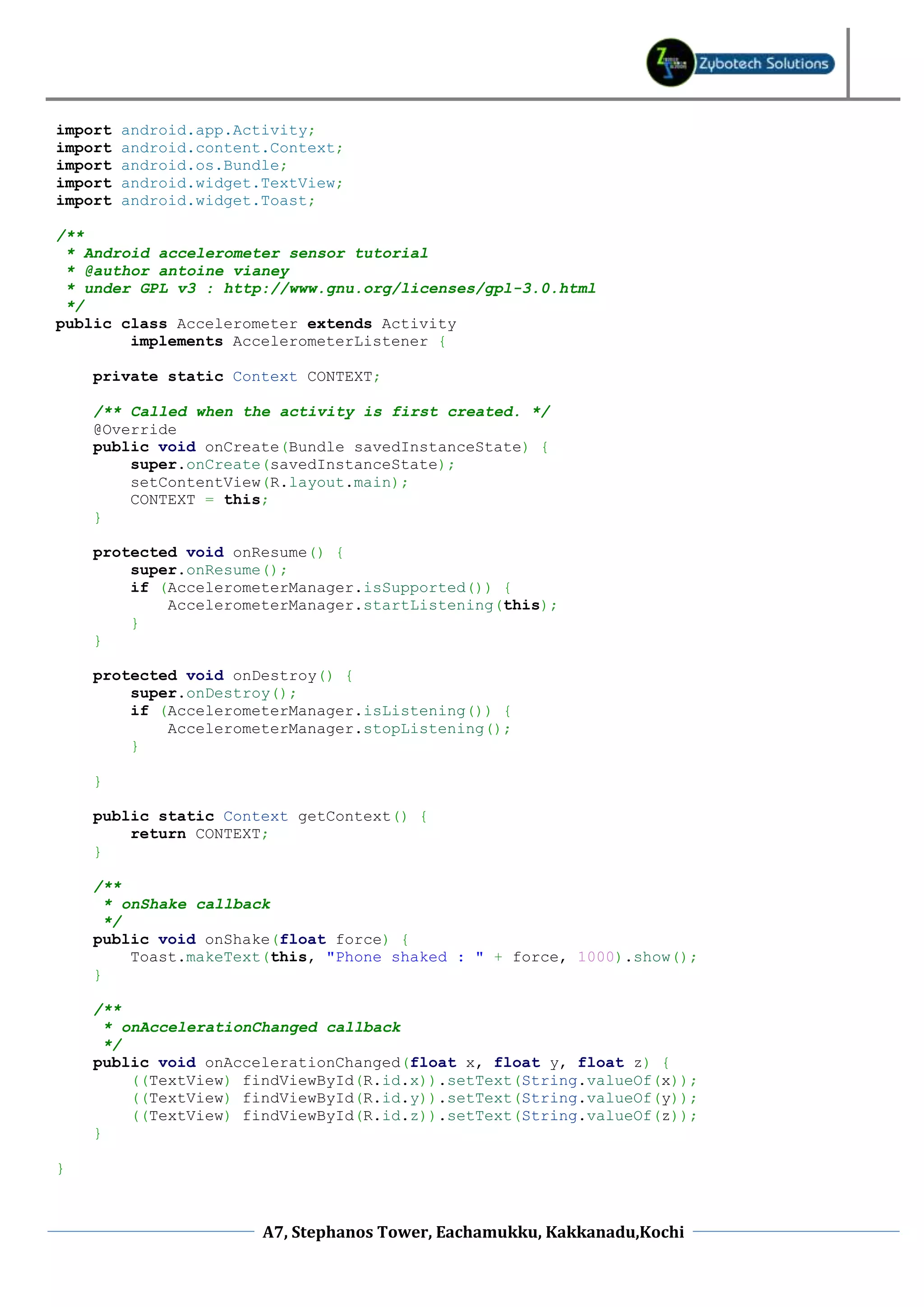
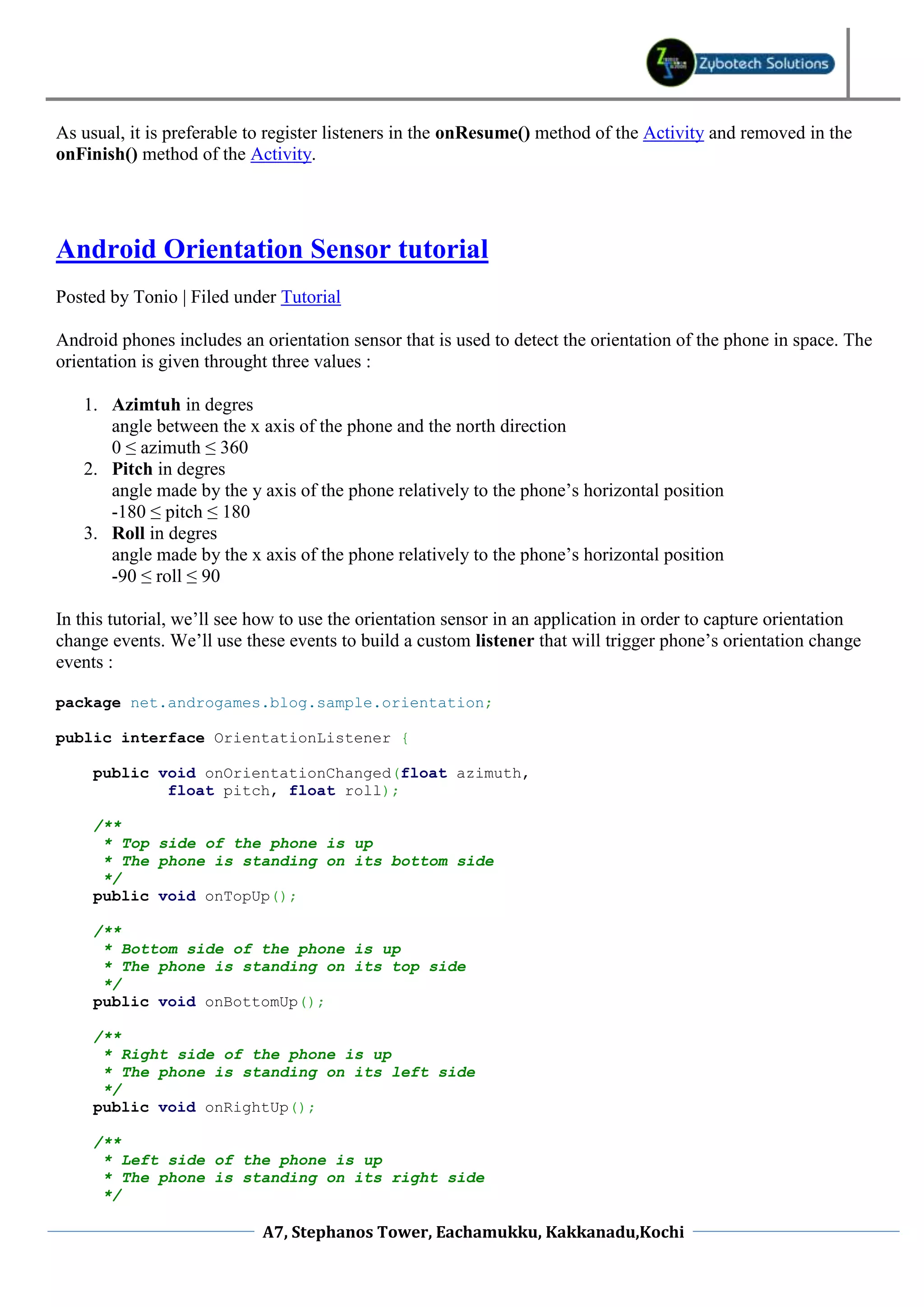
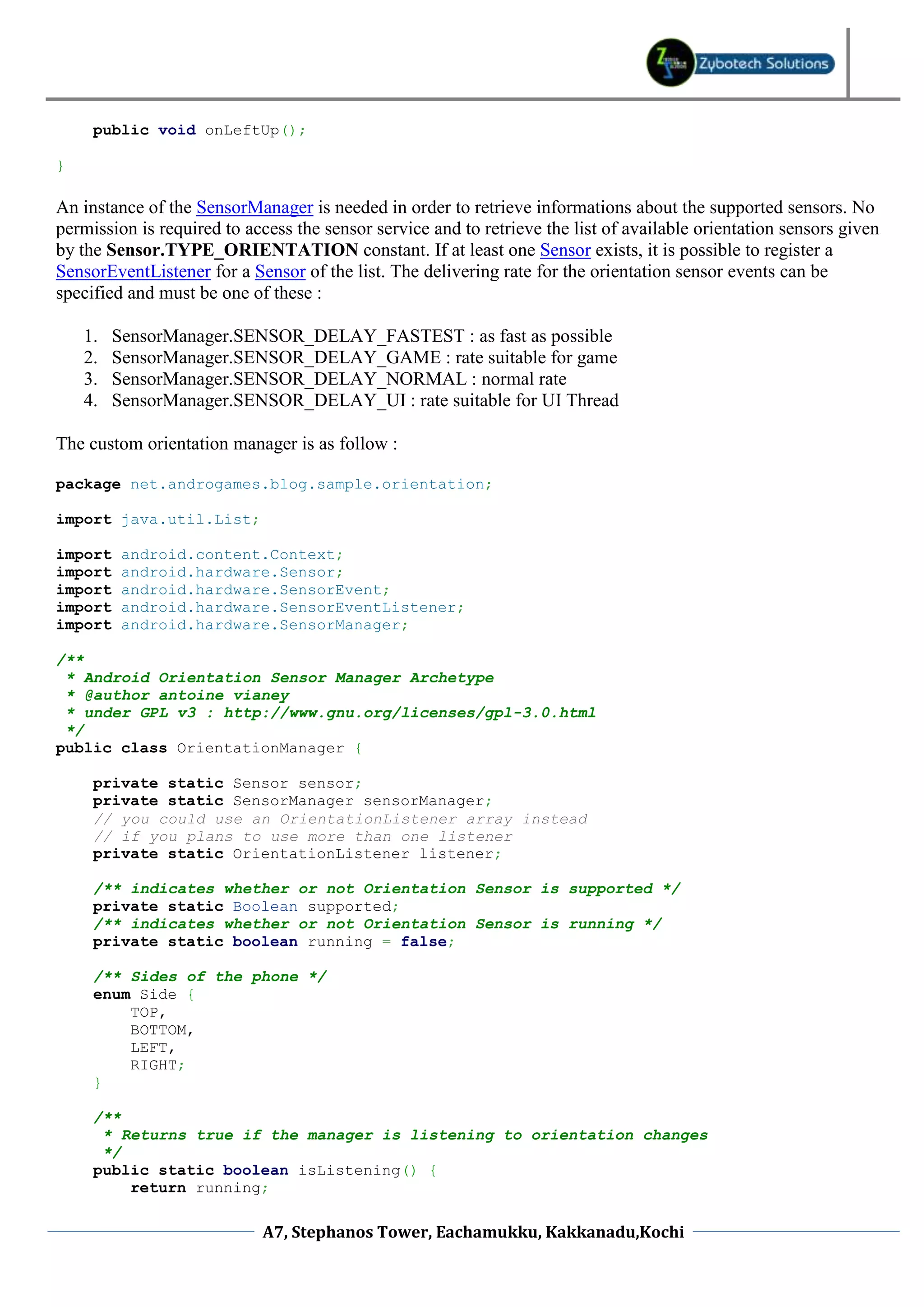
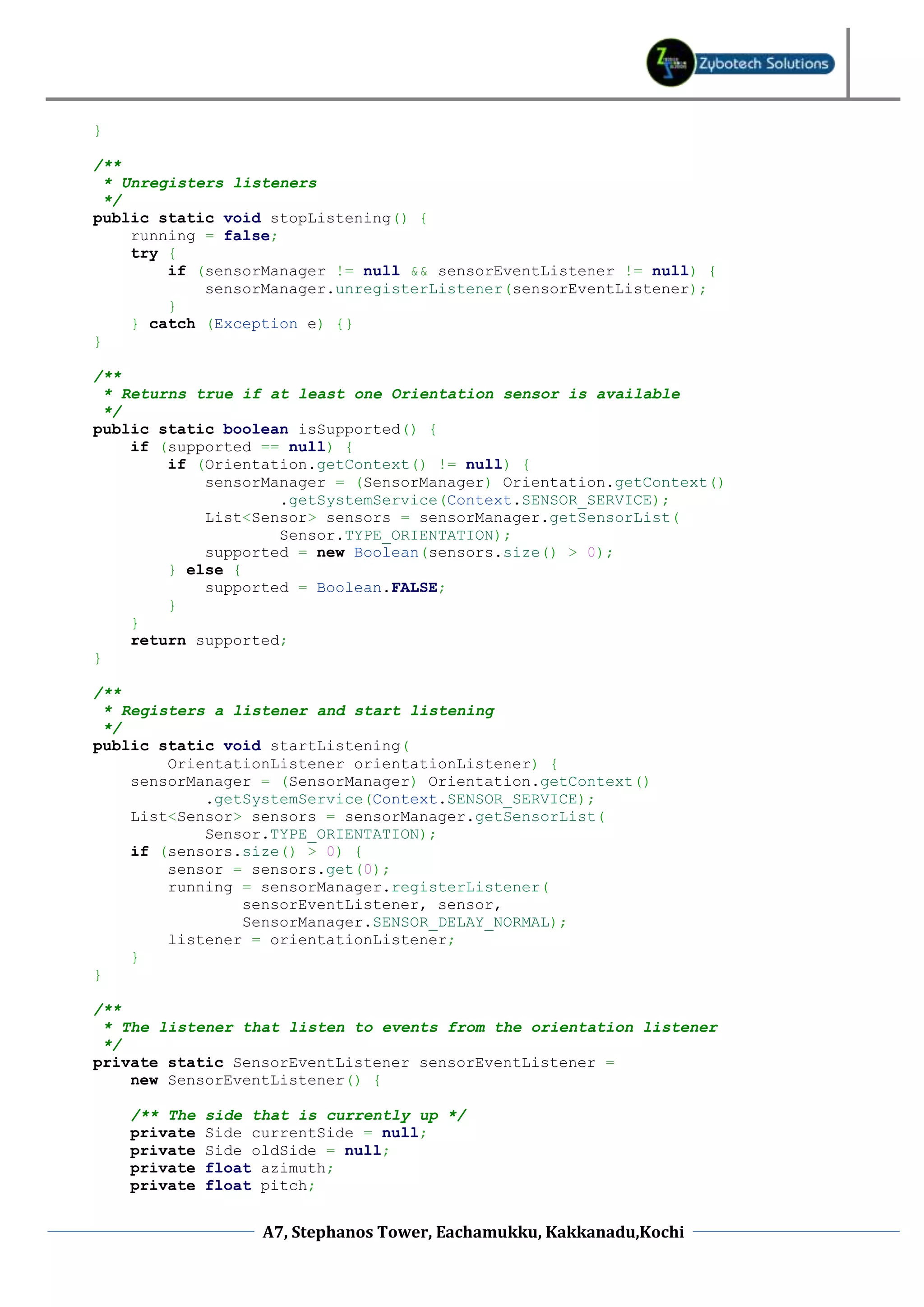
![private float roll;
public void onAccuracyChanged(Sensor sensor, int accuracy) {}
public void onSensorChanged(SensorEvent event) {
azimuth = event.values[0]; // azimuth
pitch = event.values[1]; // pitch
roll = event.values[2]; // roll
if (pitch < -45 && pitch > -135) {
// top side up
currentSide = Side.TOP;
} else if (pitch > 45 && pitch < 135) {
// bottom side up
currentSide = Side.BOTTOM;
} else if (roll > 45) {
// right side up
currentSide = Side.RIGHT;
} else if (roll < -45) {
// left side up
currentSide = Side.LEFT;
}
if (currentSide != null && !currentSide.equals(oldSide)) {
switch (currentSide) {
case TOP :
listener.onTopUp();
break;
case BOTTOM :
listener.onBottomUp();
break;
case LEFT:
listener.onLeftUp();
break;
case RIGHT:
listener.onRightUp();
break;
}
oldSide = currentSide;
}
// forwards orientation to the OrientationListener
listener.onOrientationChanged(azimuth, pitch, roll);
}
};
}
The custom OrientationManager can be use in any Activity or Service :
package net.androgames.blog.sample.orientation;
import android.app.Activity;
import android.content.Context;
import android.os.Bundle;
import android.widget.TextView;
import android.widget.Toast;
/**
A7, Stephanos Tower, Eachamukku, Kakkanadu,Kochi](https://image.slidesharecdn.com/androidaccelerometersensortutorial-120919041736-phpapp01/75/Android-accelerometer-sensor-tutorial-10-2048.jpg)
